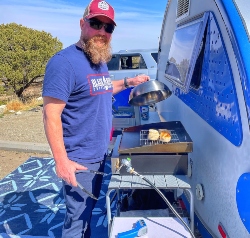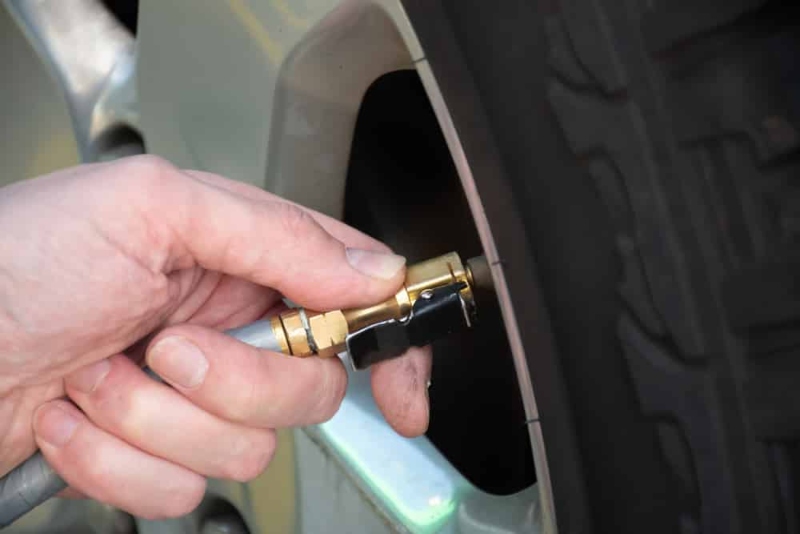Thanks for your support! If you make a purchase using our links in this article, we may make a commission. And, as an Amazon Associate, I earn from qualifying purchases. See the full disclosure here.
Discovering you have a flat tire or even just a low tire on your RV can be very stressful when you are traveling. Whether you have a motorhome, travel trailer, or camper, fixing a flat tire is never convenient. Filling RV tires at gas station air pumps can be challenging and may not work for your RV tires.
Because you never know where a flat might strike your RV, it is a good idea to know how and where to fill your RV tires. If you have had the unfortunate experience of a flat RV tire, or you have RV tires gas station pumps cannot fill, you need options. In this article, we will share with you the best ways to inflate RV tires when you are on the road.
Can You Inflate RV Tires At Gas Stations?
For many RV owners, the ability to inflate RV tires at gas station air pumps is a breeze. Smaller RVs like camper vans, small travel trailers, and even pop-up or teardrop trailers fit easily at gas station air pumps.
The real challenge with RVs and gas station air pumps comes when you own large travel trailers, fifth wheel trailers, and motorhomes. These large RVs are hard to maneuver in gas station parking lots which make getting gas or air a challenge. Many larger RVs also have tires that require more than 60 PSI, which is more than most gas station air pumps can handle.
If you are stuck in the middle of nowhere, a gas station air pump may be your only solution. Most RV owners learn quickly that the best place for gas and air are truck stops. Truck stops are designed for larger vehicles.
At a truck stop, you can pull your larger travel trailer to an air pump that will handle higher pressure requirements. In many cases, these air pumps are pull-through style, so you do not have to back up or turn around to line up at the air pump station.
We own a smaller travel trailer, and we prefer to fill up our gas and air at truck stops so we don’t have to deal with the tight confines of many gas stations.
How Do I Know What PSI My RV Tires Are?
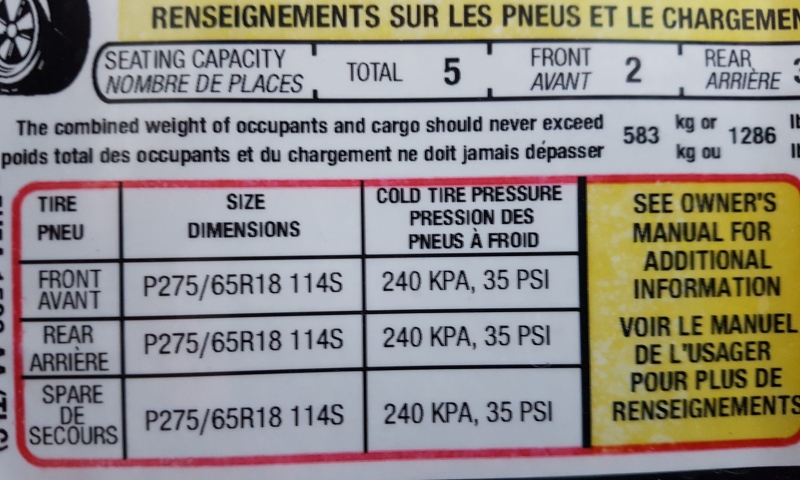
There are a couple of different ways that you can figure out the PSI required for your RV tires.
First, you can simply consult the RV owner’s manual. It will tell you about the proper PSI for the factory-installed tires. Even if you have replaced the tires, as long as they are the same size as the factory versions, they should have the same specifications as the originals.
A second place to look for the PSI for your RV tires is on the door frame or other location where the specifications label is located. Like the owner’s manual, this label will give you the proper PSI for the RV tires.
It’s important to get the right PSI because the values for RVs are much different than other vehicles like ATVs and UTVs, for example.
The third and best place to look for the proper PSI for your RV tires is on the tire itself. If you look closely at the inner ring of the sidewall of your tires, there are a bunch of numbers. These numbers tell you the size, the model, and other information about the tire.
One of the pieces of information states the proper PSI for the tire. If you have installed after-market tires on your RV, this is the best way to learn the proper pressure for your tires.
What Happens If You Put Too Much Air In Your RV Tires?
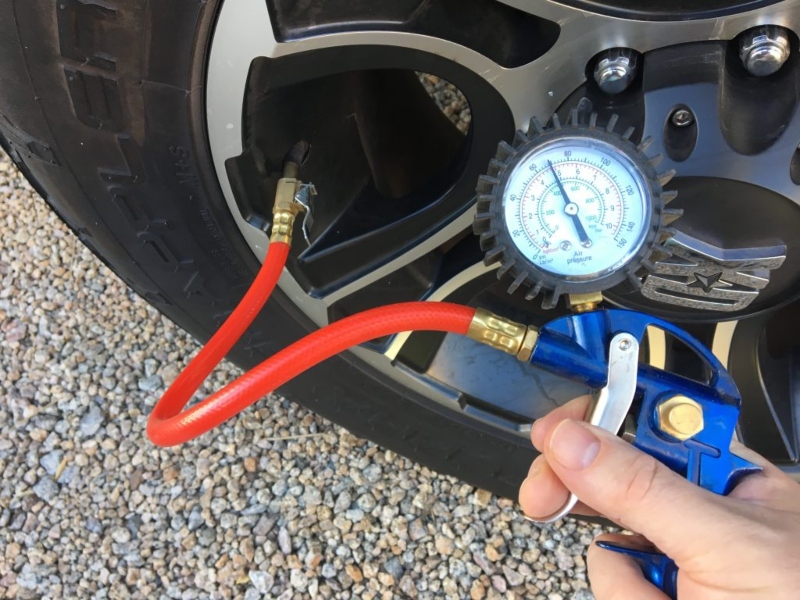
RV tires, as well as all tires, are made to handle a particular amount of air. Overfilling your RV tires can stress the tire. It is important to make sure that you have a good tire gauge to help you assess tire pressure. A tire gauge will help you avoid overfilling (or underfilling) your tires.
If you overfill your tires beyond the recommended PSI, you risk a blowout on your tire. This can be very dangerous, particularly if you are traveling at a high rate of speed on the highway.
Can I Drive My RV With Low Tire Pressure?
As with driving your RV with too much air in the tires, low pressure can be just as hazardous. Certainly, if you notice that your tire has gotten low and you are not near a gas station or truck stop, you may need to travel a bit on a low tire. But make sure that you don’t travel too far.
Driving on low tires can damage the sidewall of your tire, making the structure weak. Eventually, this could lead to a blowout, just like with too much pressure on your tires.
Use A Tire Pressure Monitoring System To Avoid Problems On The Road
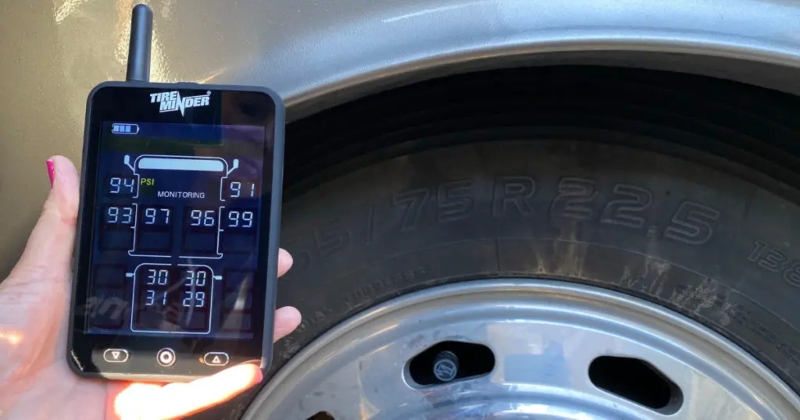
The best way to keep an eye on your RV tire pressure while traveling is to use a tire pressure monitor system (TPMS) like the TireMinder Device. Using the TireMinder or other TPMS devices will show you when your tires are starting to lose air pressure while you still have time to find an exit with a tire repair shop nearby.
Many of these devices also can monitor both your RV and tow vehicle’s tires at the same time. The wireless sensors that fit onto the tire stems send the PSI and other information to the readout device that mounts on your windshield. As they say,
Forewarned is forearmed!
Derivation of Miguel de Cervantes original quote
What’s The Best Air Compressor To Buy For My RV?
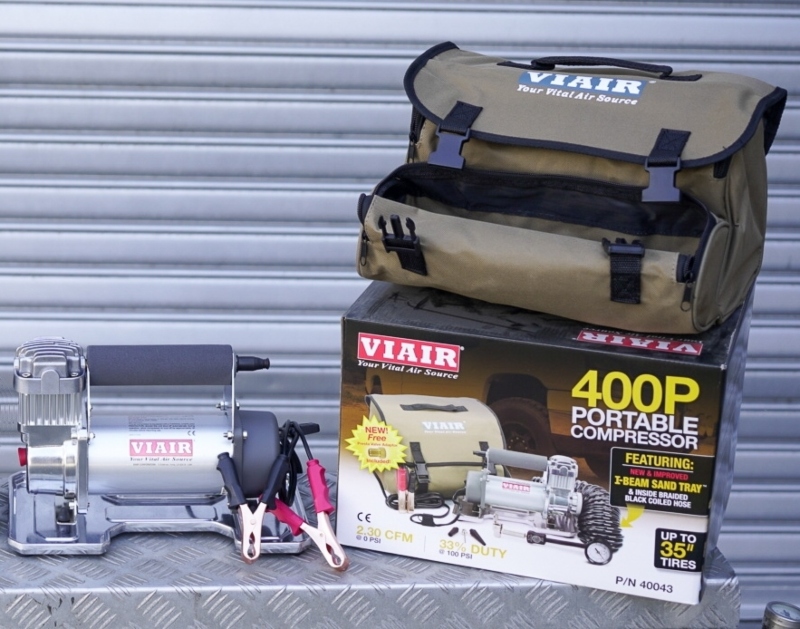
There are plenty of air compressors that you can buy for your RV, and they are a valuable tool to keep in your RV. This is a tool that you want to buy with a bit of research and consideration. The last thing you want is for a cheap, bargain air compressor to fail when you really need it to work.
One of the most popular air compressors for RVs is the VIAIR Air Compressor. This line of air compressors is great for RVs of all shapes and sizes. They have small compressors for your pop-up or teardrop but also have larger versions that have the PSI strength for your Class A motorhome.
Each VIAIR compressor comes with all of the parts you need to start using it right from the box. They even come with a helpful storage bag to keep all the parts in one place. A VIAIR compressor is a great investment for your RV and a lifesaver when you are stuck with a low or flat tire.
4 FAQs On Filling RV Tires At A Gas Station
1. What Size Air Compressor Do I Need To Inflate My RV Tires?
The air compressor size you need to inflate your RV tires depends on the PSI requirements of your RV tires. Make sure that you purchase a compressor that can fill your RV tires without a problem.
2. Can You Drive With 3 Tires On A Trailer?
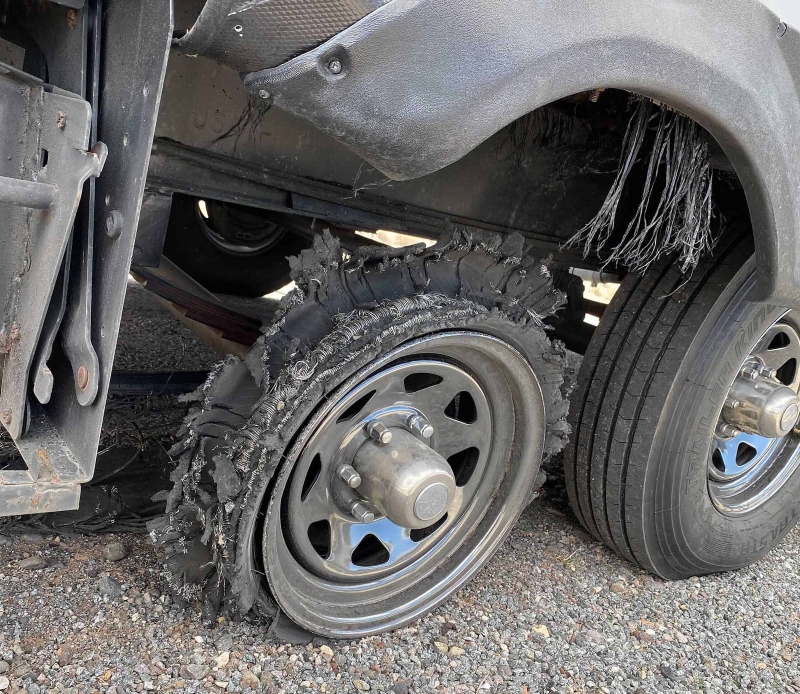
Sometimes you just cannot safely pull off the road to change a tire. If you have dual axles on your travel trailer and one tire goes flat, you can drive on just three tires.
For example, let’s say you have a travel trailer where each side has two tires. So there is an outer and inner tire on both the driver and passenger side.
If the outer driverside tire were to become flat, it is okay to drive with just the inner tire in the slow lane until you can make it to a safe highway exit. That way, you can get the flat tire repaired safely instead of pulling on the side of the highway.
The same is true if your travel trailer has two axles next to each other, so there is a front and back set of tires on each side of the RV.
However, this is not a safe driving condition for long distances. Make sure that you find a place to change the tire or meet an RV repair service tech as soon as possible.
Stores that have large parking lots are usually best, so you can pull in at the back of the parking lot. This avoids disrupting the store’s traffic, and the mobile RV tech can easily find you.
3. Can I Put Regular Air In My RV Tire If I Have Nitrogen?
Lots of tire shops offer nitrogen to fill tires instead of air. It does not shrink and expand with temperature swings as dramatically. However, if you have a low tire, and need to fill up with air, do not worry.
Mixing air and nitrogen is fine. You may notice a bit of pressure change if you travel to cold locations. If this is a problem for you when you are able, have your tires reinflated with nitrogen.
4. Is it Ok To Patch An RV Tire?
If your low or flat tire is the result of a nail, screw, or other item in your tire, patching is a good temporary fix. This fix will allow you to finish your trip or return home. However, patches for RV tires, as with car tires, are not a permanent solution.
You should make purchasing a new tire a priority either on your trip or when you get home. Driving long distances with a tire patch is not recommended by tire experts.
Final Thoughts On Inflating RV Tires At Gas Stations
Filling RV tires at gas station air pumps can be a huge pain. Sometimes, however, gas station air pumps are your best and only solution. If you are traveling and need to inflate an RV tire, there are better ways and places.
If you can, look for a truck stop for easier access. The best solution to avoid inflating RV tires at gas station air pumps is to carry a properly sized air compressor. This handy tool will save the day and will reduce your stress and worry should a flat tire happen during your vacation.
Related Reading:
1. 8 Best Ways to Avoid RV Tire Blowouts
2. Do Travel Trailer Tires Need to Be Balanced?
3. How Often Should You Rotate RV Tires?
4. 115 Point RV Inspection Checklist (New or Used)
Jason Gass – Author and Part Time RVer
Jason Gass is a full-time freelance writer and part-time RVer whose goal is to share great stories around a campfire with good friends.
When he’s not working, he spends most of his time camping, searching for the best breweries, and road-tripping in his teardrop trailer with his wife, daughter, and two dogs.
